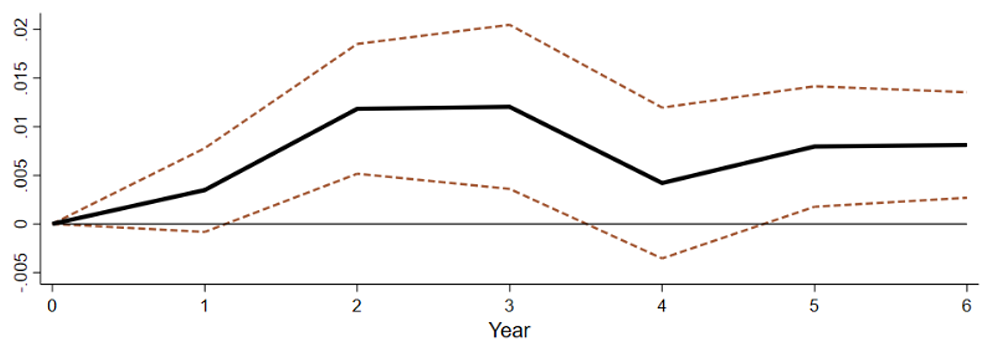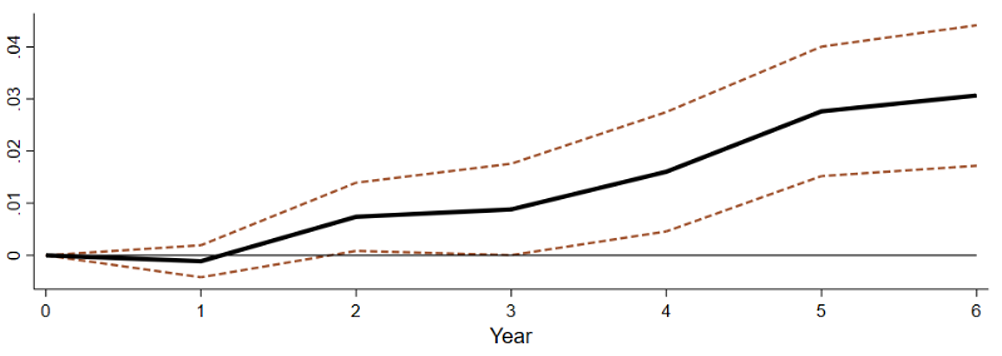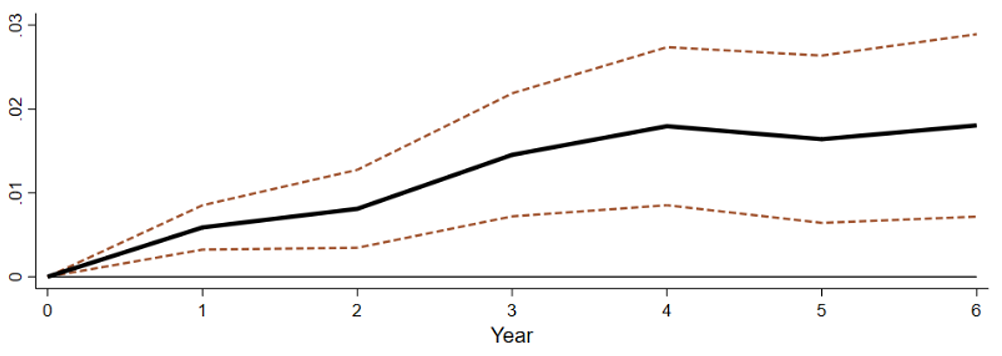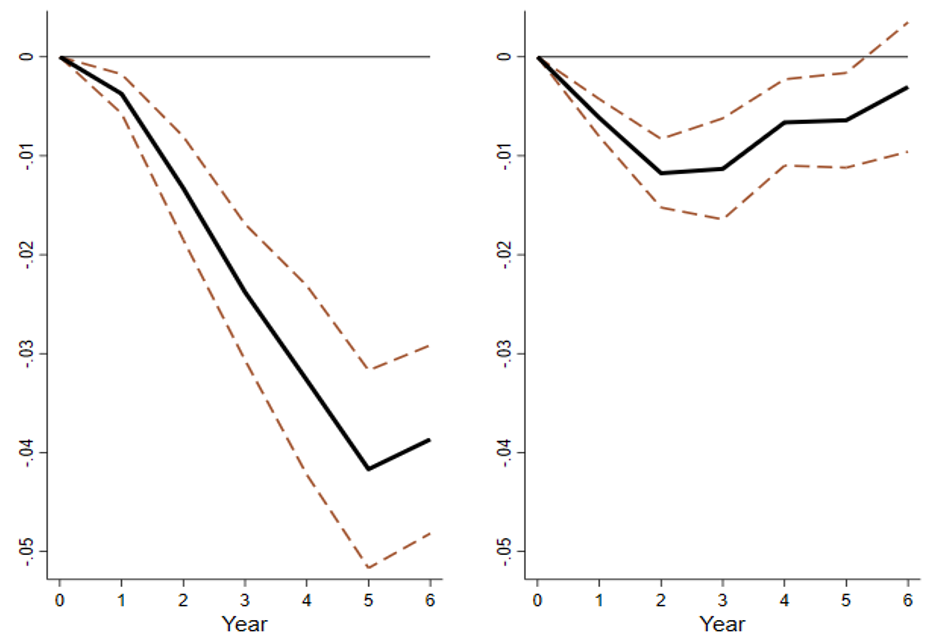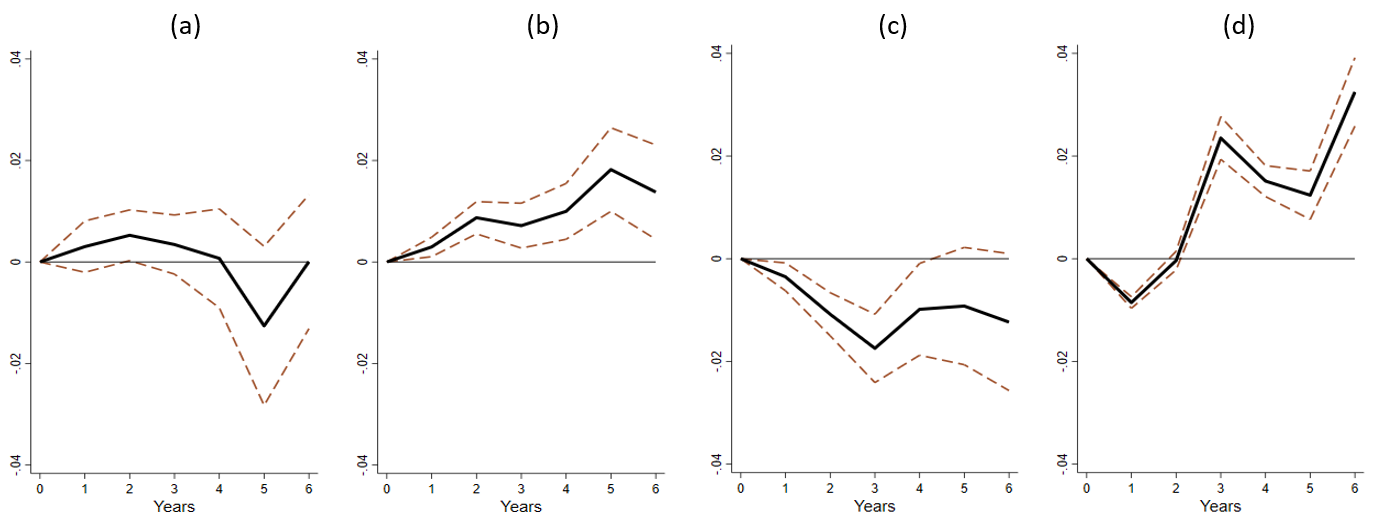References
Nicoletti, G., & Scarpetta, S. (2005). Product market reforms and employment in OECD countries. OECD
Barkbu, B., Lusinyan, L. and Muir, D., (2014) “Assessing the Gains from Structural Reforms for Jobs and Growth”, Chapter 7 in IMF, Jobs and Growth: Supporting the European Recovery
Bassanini A., Duval R., (2009), “Unemployment, institutions, and reform complementarities: re-assessing the aggregate evidence for OECD countries”, Oxford Review of Economic Policy, Volume 25, Issue 1, Spring, Pages 40–59
Cacciatore M., Fiori G., (2016) “The macroeconomic effects of goods and labor markets deregulation, Review of Economic Dynamics”, Volume 20, Pages 1-24,Pages 1-24
De Haan J., Parlevliet J. (2018) Structural Reforms: An Introduction. In: de Haan J., Parlevliet J. (eds) Structural Reforms. Springer, Cham
de Haan, J., & Wiese, R. (2022). The impact of product and labor market reform on growth: Evidence for OECD countries based on local projections. Journal of Applied Econometrics, 1–25.
Duval, R., & Furceri, D. (2018). “The effects of labor and product market reforms: The role of macroeconomic conditions and policies.” IMF Economic Review, Vol. 66, No. 1, pp. 31-69, March.
Égert, Balázs (2016). “Regulation, Institutions, and Productivity: New Macroeconomic Evidence from OECD Countries.” American Economic Review, Vol. 106, No 5, pp. 109-13.
ECB (2015), “Real convergence in the euro area: evidence, theory and policy implications”, ECB Economic Bulletin (5/2015), July, 30-45.
Fernández, A., & Tamayo, C. E. (2017). From institutions to financial development and growth: What are the links?. Journal of Economic Surveys, Vol.31, No. 1, pp. 17-57.
Kaufmann, D., Kraay, A., & Mastruzzi, M. (2010). “The worldwide governance indicators: Methodology and analytical issues.” World Bank policy research working paper No 5430.
Li, Z., Chu, Y., & Gao, T. (2020). Economic growth with endogenous economic institutions. Macroeconomic Dynamics, Vol. 24, No. 4, pp. 920-934.
Mavrogiannis and Tagkalakis (2022). The short-term effects of structural reforms and institutional improvements in OECD economies. Bank of Greece Working Paper No. 306 DOI: https://doi.org/10.52903/wp2022306
Masuch K., Anderton R., Setzer R., Benalal N., (2018), “Structural policies in the euro area”, ECB occasional paper series, No 210, June
Nicoletti, G., & Scarpetta, S. (2005). Product market reforms and employment in OECD countries. OECD Economics Department Working Papers No. 472, OECD Publishing, Paris.
Rodrik, D., Subramanian, A. and Trebbi, F. (2004), “Institutions rule: The primacy of institutions over geography and integration in economic development”, Journal of Economic Growth, Vol. 9, No 2, pp. 131–165.
Schumpeter, J. A. 1942. Capitalism, Socialism and Democracy. New York: Routledge


